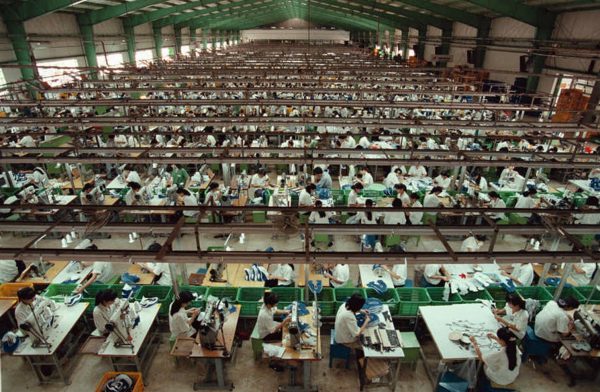In 2015, developing countries the East Asia Pacific region are likely to account for over one-third of global growth — twice as much as the rest of the developing world. China in particular is now an economic powerhouse. By some measures China is now the world’s largest economy as well as the biggest global manufacturer and exporter.
With this economic success has come increased scrutiny of the region. The rest of the world now wants to know: who sets the rules of the game in Asia?
The answer is not yet clear. But we do know that the Asia Pacific must avoid looking to a single country, single institution or single type of leadership.
If the Asia Pacific is to embrace its new role in the world and to demonstrate its newly-acquired economic heft, it needs to ensure that the rules of the game are developed within countries, across the region — and the world — rather than unilaterally by one leader, one nation or one group of regional powers. This will ensure ongoing success for the Asia Pacific, with positive spillovers for the rest of the world.
Fortunately, there is already a strong base for such deep cooperation. The Asia Pacific’s success is built on openness and creative efforts to harness globalisation. Trade in goods, services, knowledge, people, finance and technology is brisk and relatively unhindered. Asia is already an exemplar of intra-regional cooperation through ASEAN and ASEAN+3, and extra-regional cooperation through APEC. New initiatives are also underway, including the Asian Infrastructure Investment Bank and the New Development Bank, formerly known as the BRICS bank. New trade agreements are in the works, including the Trans Pacific Partnership (TPP) and the Regional Comprehensive Economic Partnership (RCEP).
The development successes of nations as diverse as Japan, Korea, Singapore and China reflect both their successful integration into the global economy and their active engagement with the multilateral system. All four have, in a few decades, gone from receiving foreign assistance to becoming large-scale providers of advice and money. The transformation of Korea from a low- to a high-income country in a single generation remains the most striking example of how well-used aid and a willingness to gradually assume regional and global responsibility can contribute ideas, build capacity and provide finance to sustain rapid growth and poverty reduction elsewhere.
China is another instructive case study. The domestic effects of its accession to the World Trade Organization in 2001 show how commitment to international rules and practices can help address domestic roadblocks to reform and transform the economy. In the past decade China has doubled its share of world manufacturing trade and now accounts for between one-quarter and one-third of manufacturing imports in Japan, the European Union and the United States.
So, how should the region mould its leadership for the future? Three aspects stand out:
First, broaden and deepen regional cooperation. Broader cooperation means including more partners outside the region, as in the TPP and RCEP, so that the Asia Pacific won’t turn into a high-walled fortress but becomes even more of a level playing field with low barriers to trade, knowledge and the movement of people, and the right incentives for innovation. The new agreements could help by bringing in new partners, new perspectives and new opportunities.
Deeper cooperation will mean tackling difficult, intransigent issues. For instance, as ASEAN moves towards the formation of the ASEAN Economic Community by the end of 2015 it can act decisively to reduce the still-high barriers to the integration of services such as finance, transport and telecommunications.
Second, look inwards and make governments more effective and more transparent. Despite its economic success, the Asia Pacific ranks lower than others on some dimensions of government like service delivery, policy formulation and implementation, and the quality of the civil service. Enhancing the effectiveness of the public sector will help both in sustaining economic growth in an unfavourable global economy and in addressing rising concerns about economic and social inequalities. More transparency would also be helpful. Greater tolerance of public scrutiny would allow citizens to provide more input and hold their governments accountable, contributing to better service delivery. Making more information about taxes and spending freely available would be a good first step.
Third, share lessons to help address global challenges. Asia’s role and self-image lean towards being a supplier of manufactured products to the world, including by building regional and global value chains. It has enormous experience and acumen in this area, yet hesitates to see itself as a role model for other countries and regions who want to move to middle-income status.
And region can go further in fulfilling its potential as a provider of global public goods. For instance, Japan is a leader in disaster risk management and has reached out to other countries in the region, and elsewhere, to share its experiences and expertise. Similarly, China is taking the lead in investing in energy efficiency. Such expertise embedded in the region can help other developing countries address the global challenge of climate change.
Sustaining success throughout this century requires that the rules in Asia Pacific, are set not by one country or by one institution, but rather through countries agreeing on principles and finding ways of deciding on the rules together. This means leading with others. Collective effort will secure progress.
Dr Sri Mulyani Indrawati is Managing Director of the World Bank Group and a former finance minister of Indonesia.
This article appeared in the most recent edition of the East Asia Forum Quarterly, ‘Leadership in the region‘.

